Verdict Guilty, Smith convicted | Name Byron Smith | |
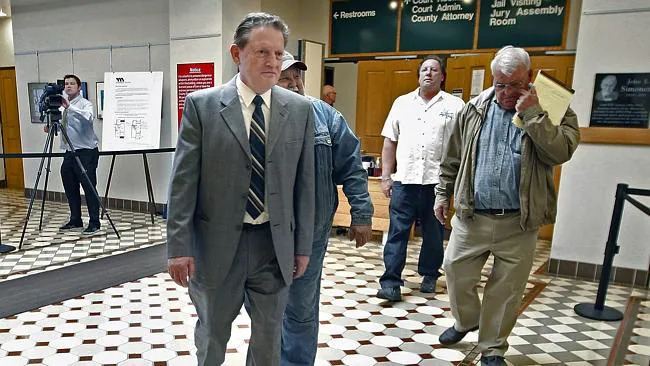 | ||
Date November 26, 2012 (2012-11-26) Deaths 2 (Haile Kifer, Nicholas Brady) | ||
The Byron David Smith killings occurred on Thanksgiving Day of 2012, when Haile Kifer, 18, and her cousin, Nicholas Brady, 17, broke into the home of Byron David Smith, 65, in Little Falls, Minnesota, in the United States. Smith, armed with a Ruger Mini-14, shot the teens separately and minutes apart as they entered the basement where he was, later stating to police he was worried about them being armed.
Contents
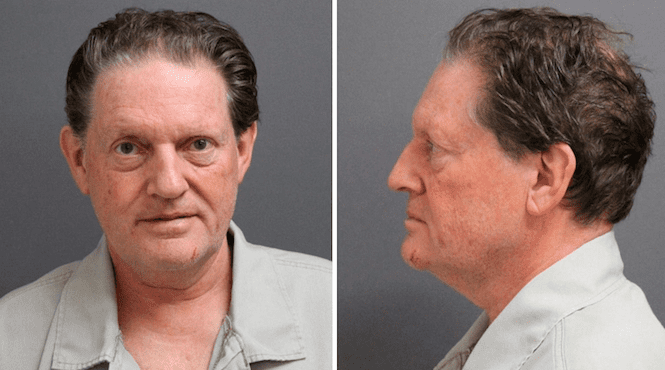
The case sparked debate over the "Castle doctrine", which allows a homeowner to defend his home with lethal force. The prosecution alleged that Smith's actions showed aspects of premeditation (see lying in wait) and he used excessive force in relation to the threat. He was convicted and sentenced to Life in prison.
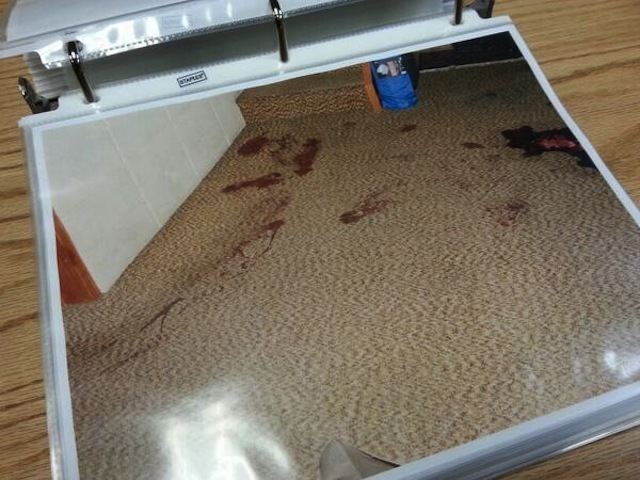
Lead up

Smith, 64, was retired from the U.S. State Department and had a history of international travel to Moscow, Bangkok and Beijing. Smith's brother described him as a retired security engineering officer.
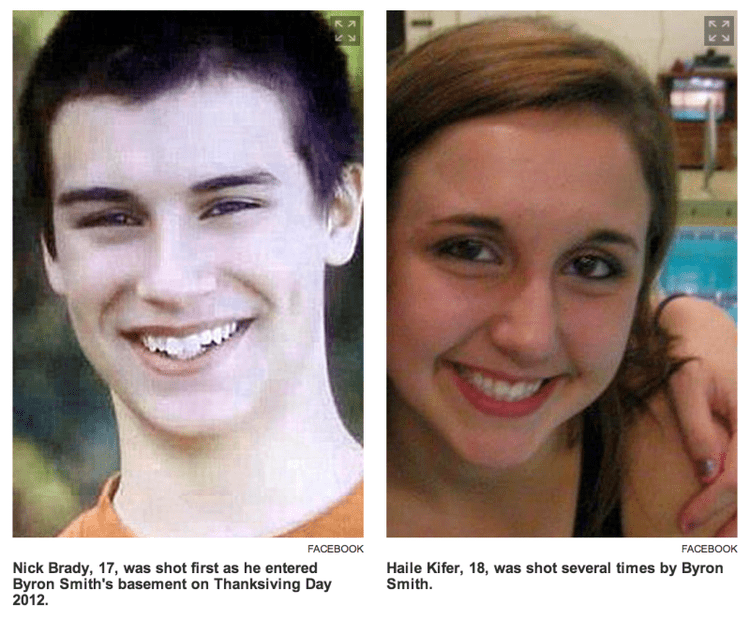
Prior to the incident, Byron Smith had been burglarized at least half a dozen times over the preceding few months. Among the items stolen were thousands of dollars in cash, the watch his father had received after spending nearly a year as a POW in World War II, medals and ribbons Smith had earned in the Air Force during the Vietnam War, several firearms, and jewelry. Smith began routinely wearing a holster with a loaded gun inside his home. There is some evidence that Kifer and Brady committed at least a couple of the previous break-ins and were being investigated for prior burglaries, including one earlier on the day they were killed. Smith installed a security system to protect himself.
Incident
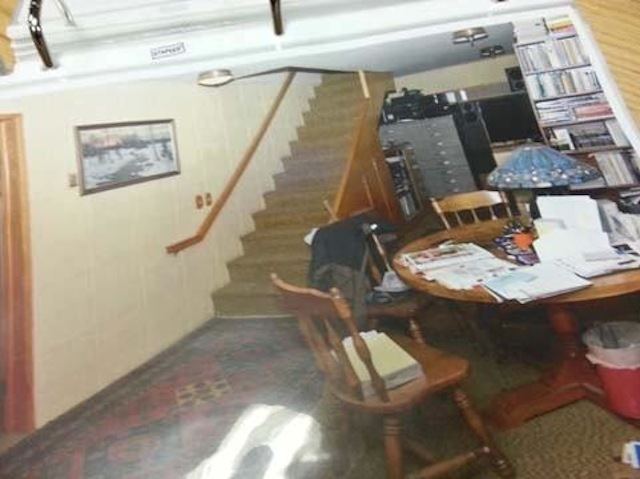
On November 22, 2012, Kifer and Brady broke into Smith's home. Video surveillance captured the teens casing the property prior to the break-in. By his own account to police, Smith was in the basement when he shot Brady twice at the top of the basement stairs, and once in the face fatally after he fell to the bottom of the stairs. Minutes later when Kifer entered the basement, he shot her at the top of the stairs. Wounded, she fell down the stairs, and after Smith's rifle jammed, he shot her multiple times in the chest with a 22-caliber revolver, dragged her across the floor to set her beside the body of her cousin, and then shot her fatally under the chin. Smith then waited until Friday to have a neighbor call police, saying that he did not want to bother law enforcement on Thanksgiving. Audio and video of the events were recorded by Smith's security system.
Investigation
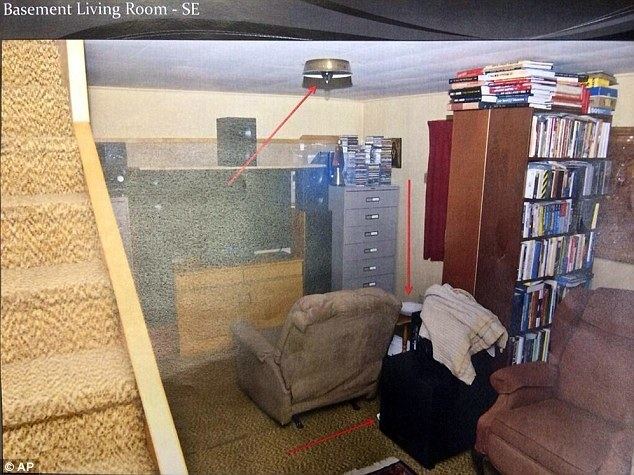
The deaths were not immediately reported to police. Smith waited until the next day to notify police of the shootings, claiming he didn't want to bother the police on Thanksgiving. Morrison County Sheriff Michel Wetzel has acknowledged that Brady and Kifer were there to burgle Smith's residence. Brady's sister claimed Brady stole drugs from her home August 28 in a case that was still under investigation. Evidence recovered from the car driven by Brady was linked to a burglary of the residence of a retired teacher the night before he and Kifer were killed by Byron Smith.
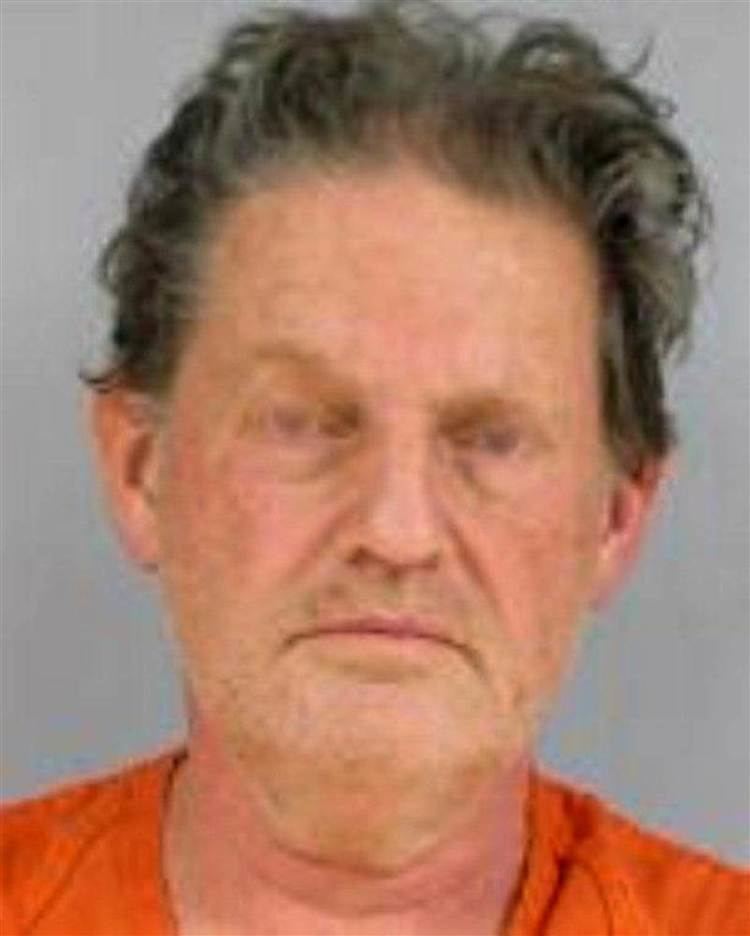
Smith's statements to police describe delivering killing shots to the heads of both victims after he had shot them on the stairs and they had fallen to the basement floor wounded. In his statement, Smith said that Kifer had let out a short laugh after she fell down the stairs, saying "If you're trying to shoot somebody and they laugh at you, you go again." The audiotape did not record Kifer laughing; instead she cries "Oh my God!" in fear. In police interviews Smith acknowledged "firing more shots than I needed to" and that he fired "a good clean finishing shot" into Kifer's head.
Castle doctrine debate
Legal analysts have stated that the initial shootings most likely would have been justified under Minnesota's Castle law, but that the subsequent shots were not justified once any threat had been removed. Sheriff Wetzel said that the law "doesn't permit you to execute somebody once a threat is gone." Hamline University School of Law professor Joseph Olson: "I think the first shot is justified. After the person is no longer a threat because they're seriously wounded, the application of self-defense is over."
A number of aspects of the case were noted by police as being inconsistent with self-defense. Smith moved his truck earlier in the day. He claimed it was in order to clean his garage. Prosecutors argued at his trial that it was an attempt to make the house look abandoned in order to lure the burglars into his home.
In addition to his home surveillance system, Smith also recorded at least 6 hours of audio on a digital recorder in the basement of the residence. He was sitting in a chair at the bottom of the stairs with a loaded rifle and a tape recorder that captured not only the shootings, but also a monologue by Smith. Prior to the break-in, he is heard saying "In your left eye." and "I realize I don't have an appointment but I would like to see one of the lawyers here". The prosecution noted that Kifer was later shot in the left eye by Smith and allege that the other statement is a rehearsal of what he would say after the shooting—an indication that he knew he would soon need an attorney.
Following the shootings, Smith captured a number of statements including: "I am not a bleeding heart liberal. I felt like I was cleaning up a mess - not like spilled food, not like vomit, not even like…not even like diarrhea - the worst mess possible. And I was stuck with it…in some tiny little respect…in some tiny little respect. I was doing my civic duty. If the law enforcement system couldn't handle it, I had to do it. I had to do it. The law system couldn't handle her and if it fell into my lap and she dropped her problem in my lap…and she threw her own problem in my face. And I had to clean it up." Smith's recorded statements, the evidence indicating he had planned the shootings, along with the excessive number of shots fired led to the charge of second degree murder. Smith was initially charged with two counts of second degree murder, however, in April 2013, he was indicted on two counts of first degree murder. Bail was later set at $50,000, which Smith posted.
Hamline law professor emeritus Joseph Daly commented that the laws surrounding the case were dividing the Little Falls community. "In some states, somebody breaks into your home you are allowed to shoot them dead. Period," said Daly. He pointed out others states, such as Florida have a "stand your ground" law, but Minnesota has what's known as a reasonable person doctrine. "If a reasonable person would see if you are in fear of great bodily harm of death. That's our statute. It comes down to what would a reasonable person see in this situation for Mr. Smith?" said Daly.
Fox News host Sean Hannity supported Smith's actions on his show citing the fact that the teens broke into Smith's house to commit a robbery. Another guest on the show agreed, stating: "The guy should get a medal of freedom for what he did." Geraldo Rivera also stated that he would have fired the initial shots, but supported the guilty verdict, and expressed disgust over the "finishing" shot of the girl.
Trial
On April 29, 2014, Byron David Smith was found guilty on two counts of first-degree murder with premeditation and on two counts of second-degree murder after three hours of jury deliberations. He was immediately sentenced to life in prison without parole. The audio recordings were named by the jurors as the biggest influence on their decision. "That was the most damning piece of evidence in my mind," Wes Hatlestad, one of 12 jurors, said following the trial. "That audio recording of the actual killings and the audio recording of Mr. Smith's interview immediately after his arrest ... pretty much convinced me that we were dealing with a deranged individual."
Law
Under Minnesota state statute, "...[R]easonable force may be used upon or toward the person of another without the other's consent when the following circumstances exist or the actor reasonably believes them to exist...when used by any person in lawful possession of real or personal property...in resisting...unlawful interference with such property...
Another state statute states: "The intentional taking of the life of another is not authorized..., except when necessary in resisting or preventing an offense which the actor reasonably believes exposes the actor or another to great bodily harm or death, or preventing the commission of a felony in the actor's place of abode."
According to another state statute: "In criminal trials, the court shall decide questions of law, except in cases of criminal defamation, and the jury shall decide questions of fact."
